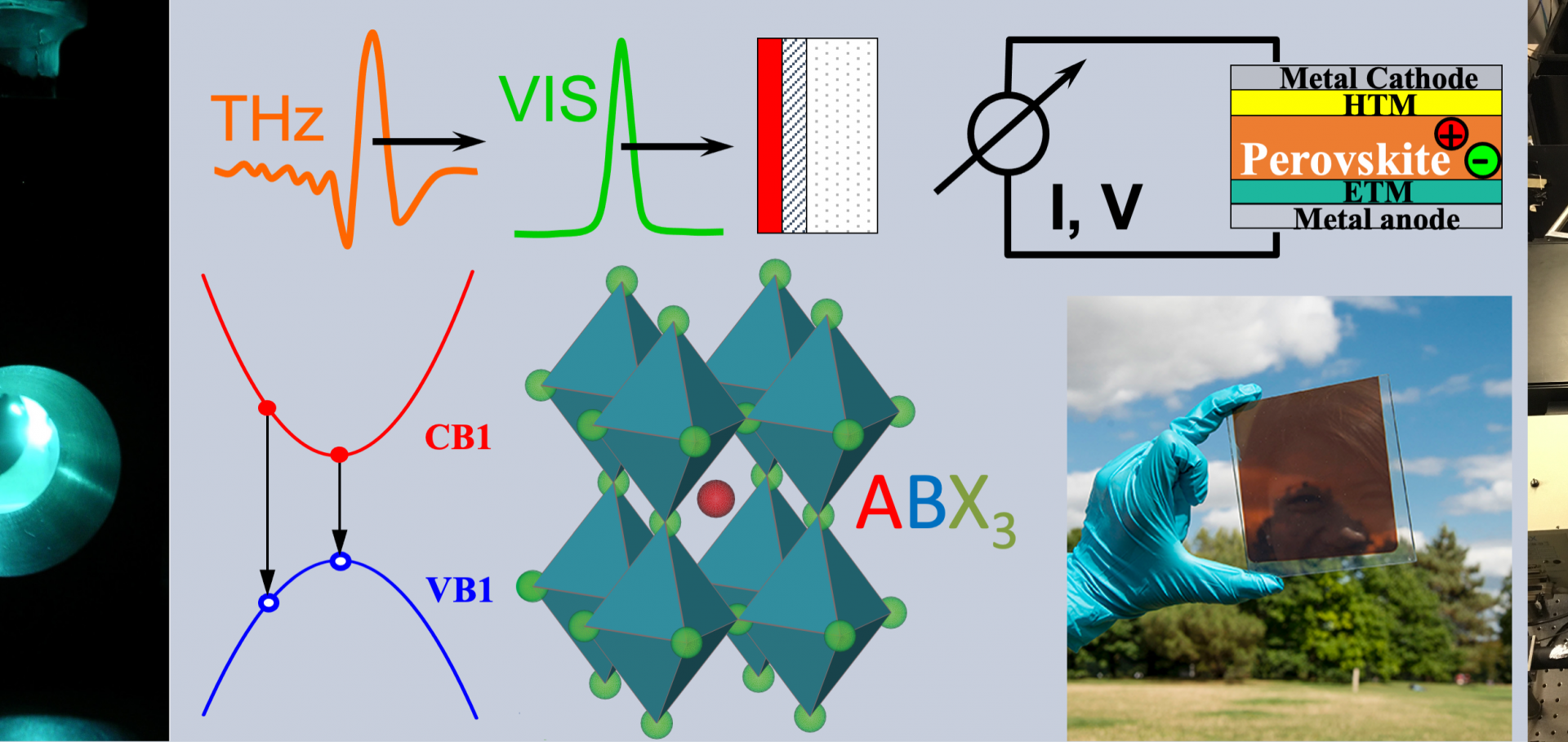Dependence of Dye Regeneration and Charge Collection on the Pore‐Filling Fraction in Solid‐State Dye‐Sensitized Solar Cells
Advanced Functional Materials Wiley 24:5 (2014) 668-677
Formamidinium lead trihalide: a broadly tunable perovskite for efficient planar heterojunction solar cells
Energy and Environmental Science Royal Society of Chemistry 7:3 (2014) 982-988
Abstract:
Perovskite-based solar cells have attracted significant recent interest, with power conversion efficiencies in excess of 15% already superceding a number of established thin-film solar cell technologies. Most work has focused on a methylammonium lead trihalide perovskites, with a bandgaps of ∼1.55 eV and greater. Here, we explore the effect of replacing the methylammonium cation in this perovskite, and show that with the slightly larger formamidinium cation, we can synthesise formamidinium lead trihalide perovskites with a bandgap tunable between 1.48 and 2.23 eV.We take the 1.48 eV-bandgap perovskite as most suited for single junction solar cells, and demonstrate long-range electron and hole diffusion lengths in this material, making it suitable for planar heterojunction solar cells. We fabricate such devices, and due to the reduced bandgap we achieve high short-circuit currents of >23 mA cm, resulting in power conversion efficiencies of up to 14.2%, the highest efficiency yet for solution processed planar heterojunction perovskite solar cells. Formamidinium lead triiodide is hence promising as a new candidate for this class of solar cell. © The Royal Society of Chemistry 2014.An ultrafast carbon nanotube terahertz polarisation modulator
Journal of Applied Physics American Institute of Physics 115:20 (2014) 203108-203108
Abstract:
We demonstrate ultrafast modulation of terahertz radiation by unaligned optically pumped single-walled carbon nanotubes. Photoexcitation by an ultrafast optical pump pulse induces transient terahertz absorption in nanowires aligned parallel to the optical pump. By controlling the polarisation of the optical pump, we show that terahertz polarisation and modulation can be tuned, allowing sub-picosecond modulation of terahertz radiation. Such speeds suggest potential for semiconductor nanowire devices in terahertz communication technologies.Chromophores in molecular nanorings: when is a ring a ring?
journal of physical chemistry letters American Chemical Society 5:24 (2014) 4356-4361
Abstract:
The topology of a conjugated molecule plays a significant role in controlling both the electronic properties and the conformational manifold that the molecule may explore. Fully π-conjugated molecular nanorings are of particular interest, as their lowest electronic transition may be strongly suppressed as a result of symmetry constraints. In contrast, the simple Kasha model predicts an enhancement in the radiative rate for corresponding linear oligomers. Here we investigate such effects in linear and cyclic conjugated molecules containing between 6 and 42 butadiyne-linked porphyrin units (corresponding to 600 C-C bonds) as pure monodisperse oligomers. We demonstrate that as the diameter of the nanorings increases beyond ∼10 nm, its electronic properties tend toward those of a similarly sized linear molecule as a result of excitation localization on a subsegment of the ring. However, significant differences persist in the nature of the emitting dipole polarization even beyond this limit, arising from variations in molecular curvature and conformation.Measuring the electrical properties of semiconductor nanowires using terahertz conductivity spectroscopy
Proceedings of SPIE--the International Society for Optical Engineering SPIE, the international society for optics and photonics 8923 (2013) 892321-892321-6


